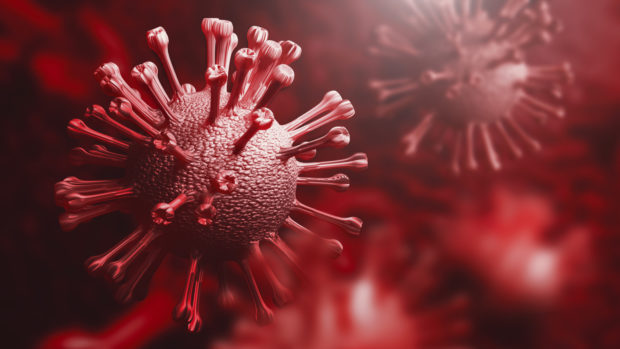From outbreak to pandemic: The WHO’s virus response

SAR-CoV-2_Super closeup Coronavirus COVID-19 in human lung body background. Science microbiology concept. Red Corona virus outbreak epidemic. Medical health virology infection research. 3D illustration
GENEVA, Switzerland — The World Health Organization (WHO), attacked by the United States for its handling of the coronavirus outbreak, has published a blow-by-blow account of its actions from the first cases in China at the end of December up until the declaration of a pandemic on March 11.
Here are key points of the WHO’s timeline covering the first 100 days of the coronavirus outbreak.
First cases in Wuhan
On December 31, 2019, China reported to the WHO a “cluster” of pneumonia cases “of unknown cause” in Wuhan, in the province of Hubei.
Of a total of 44 cases, 11 patients were “severely ill,” the others stable.
On January 1, the WHO activated a crisis group, putting the body “on an emergency footing for dealing with the outbreak.”
Article continues after this advertisementOn January 4, the WHO on social media reported a cluster of pneumonia cases “with no deaths”, in Wuhan. A day later, it published its first “Disease Outbreak News” destined for scientists and public health specialists on the new virus.
Article continues after this advertisementOn January 10, the WHO sent “technical guidance” with advice to all countries on how to detect, test and manage potential cases. Evidence at the time suggested “no or limited human-to-human transmission,” the WHO said.
Outside China
On January 11, China gave the WHO the genetic sequence of COVID-19.
On January 13, Thailand reported the first imported case on its territory.
On January 14, Maria von Kerkhove, COVID-19 technical lead at the WHO, told a press briefing that there “may have been limited human-to-human transmission,” based on 41 confirmed cases, and that there was the risk of a wider outbreak.
On January 20 and 21, WHO experts from China and the western Pacific region went on a brief field visit to Wuhan.
On January 22, the WHO mission to China said there was evidence of human-to-human transmission in Wuhan — among close contacts such as families or in health care settings — but that “more investigation is needed to understand the full extent of transmission.”
On January 22 and 23, WHO chief Tedros Adhanom Ghebreyesus convened an emergency committee to assess whether the COVID-19 outbreak constituted a “public health emergency of international concern.”
The committee, consisting of independent international experts, was unable to reach a consensus and asked to meet again 10 days later.
On January 28, a WHO delegation travelled to Beijing, led by Tedros, who agreed with the Chinese government that an international team of scientists would be dispatched to China.
The road to pandemic
On January 30, the WHO declared COVID-19 to be “a public health emergency of international concern.”
Between February 16 and 24, a scientific mission of experts from the US, China, Germany, Japan, South Korea, Nigeria, Russia, Singapore and Canada travelled to Wuhan.
On February 24, a team of experts from the WHO and the European Centre for Disease Prevention and Control travelled to Italy, which became the epicentre of the coronavirus outbreak after China.
On March 11, the WHO designated COVID-19 as a pandemic.
At that time, 90 percent of cases were declared in just four countries, according to the WHO, with 81 countries reporting no cases at all, and 57 countries reporting up to 10 cases.
Edited by JPV
For more news about the novel coronavirus click here.
What you need to know about Coronavirus.
For more information on COVID-19, call the DOH Hotline: (02) 86517800 local 1149/1150.
The Inquirer Foundation supports our healthcare frontliners and is still accepting cash donations to be deposited at Banco de Oro (BDO) current account #007960018860 or donate through PayMaya using this link.